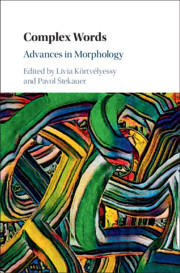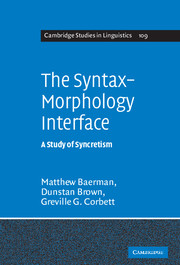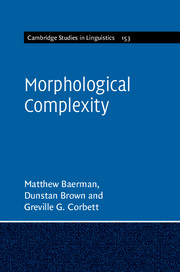Network Morphology
Morphology is particularly challenging, because it is pervaded by irregularity and idiosyncrasy. This book is a study of word structure using a specific theoretical framework known as 'Network Morphology'. It describes the systems of rules which determine the structure of words by construing irregularity as a matter of degree, using examples from a diverse range of languages and phenomena to illustrate. Many languages share common word building strategies and many diverge in interesting ways. These strategies can be understood by distinguishing different notions of 'default'. The Network Morphology philosophy promotes the use of computational implementation to check theories. The accompanying website provides the computer coded version of the Network Morphology model of word structure for readers to test, customize and develop. This book will be a valuable contribution to the fields of linguistic typology and morphology and will be welcomed by researchers and graduate students in these areas.
- Proposes a robust theory of morphology, which accounts for both the structural properties of words and the relationship between morphology and syntax
- Through the accompanying website http://networkmorphology.as.uky.edu/ readers can download analyses and run them on a computer, for both theoretical and applied benefits
- Includes coverage of 'hot topics' in morphology, including syncretism and deponency
Reviews & endorsements
Advance Praise: “ … covers not only inflections and paradigm structure but also derivational relatedness ... an invaluable survey.” --Andrew Spencer, University of Essex
Product details
March 2012Hardback
9781107005747
346 pages
234 × 160 × 21 mm
0.69kg
15 b/w illus. 3 tables
Available
Table of Contents
- 1. Options in constructing a morphological framework
- 2. A framework for morphological defaults
- 3. Inflectional classes
- 4. Syncretism
- 5. Morphological mismatch and extended deponency
- 6. Defaults and paradigmatic restructuring
- 7. Derivation
- 8. Conclusion.







